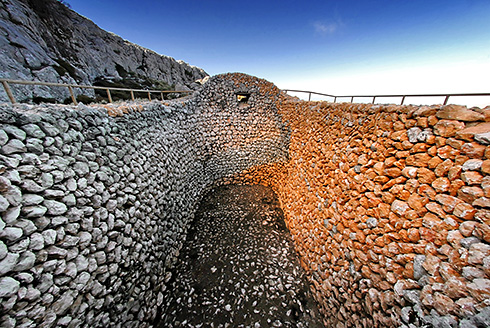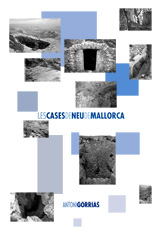Snow in the Serra de Tramuntana: White Gold
Having ice, cool drinks and ice cream in summer is normal and no one wonders what people did before the invention of fridges and freezers. These electrical appliances have not always been around, though, and there has not always been electricity to operate them. What did people use to do to make ice or ice cream?
The Serra de Tramuntana might be said to have been one big ice-making factory in winter, supplying the rest of Mallorca with ice in spring and summer. This system has been described as an ice industry, with the creation of a job known as a nevater. It also led to the construction of ethnological and architectural heritage that can still be seen today in the Serra de Tramuntana, in addition to numerous toponyms.
The system was a very easy one. Snow was collected for storage in cases de neu (ice stores), using baskets, spades and buckets. The ice store was a hole dug into the ground, taking advantage of a crevice or natural depression if possible. This big pit, which was then covered with a manmade one or two-sided roof, had several openings: a door for the nevaters to enter and work inside it and windows known as bombarderes, used for throwing the snow inside.
The snow, laid in horizontal layers, was trodden on for about three hours to make compact blocks of ice. Each layer was covered in reed leaves. When the ice store was full and the layers had reached the top, the doors and windows were sealed as hermetically as possible so that the cold could not escape and the ice would stay frozen until well into the warmer months.

Some forty ice stores have been documented throughout the whole of the Serra de Tramuntana, from Puigpunyent to Pollença
The ice store was normally reopened in early spring (traditionally on the first day of April), and the ice was removed in blocks known as pans de neu. It was then transported to the closest towns and villages for subsequent distribution throughout Palma.
The ice store was normally reopened in early spring (traditionally on the first day of April), and the ice was removed in blocks known as pans de neu. It was then transported to the closest towns and villages for subsequent distribution throughout Palma.
Ice stores can be found in the highest parts of the Serra de Tramuntana, often at an altitude of over one thousand metres. This made it complicated for the ice to be brought down to towns and villages, since it had to be transported swiftly and efficiently to stop it from melting. Some ice stores, like those of Puig d’en Galileu on the Massanella massif, have a network of paths leading up to them, created in what was a genuine feat of engineering by the local people.
The ice was mainly used for therapeutic purposes or for food and drink. It had many different medicinal applications, such as bringing down temperatures or helping to treat spasms caused by nervous disorders. It was also used to reduce inflammations caused by knocks, lumps or bruising. When mixed with oil, it could also relieve burns.
Likewise, ice was used to make ice creams and cold refreshing drinks. The recipes were very basic ones, for example aigua llisa (a drink made of water, ice and a few drops of lemon juice). Two variations were aigua de canyella, with cinnamon, and aigua dolça with sugar.
Some forty ice stores have been documented throughout the whole of the Serra de Tramuntana, from Puigpunyent to Pollença, providing substantial information about the importance of Mallorca’s ice industry.
The first historical references to snow being used in Mallorca date back to the 14th century. From then on through to the early 20th century, it was very typical to use snow, although the industry reached a peak in the 18th century. The ice industry may have changed, but ice cream lovers now know that our grandparents were also tempted by such things.
Text by Bartomeu Homar
Translated by Rachel Waters
Did you know that...
Storing snow in dugout pits was a practice known to ancient civilizations like the Mesopotamians. The Greeks also stored snow to cool wine during the summer. In Mallorca, it was very important to have supplies of ice, not only for doctors but also for a whole network of ice cream and cold drink sellers, who made their living this way during the summer months. When it did not snow or the island ran out of ice, it was shipped in from Barcelona. Ice from the Serra de Tramuntana was also shipped to Minorca, Ibiza and Formentera, where it was much appreciated.
Bibliography

Les cases de neu de Mallorca
Researcher Antoni Gorrias presents a comprehensive study of the ice industry in Mallorca. As well as exploring many very different aspects of the subject, including the work of a nevater, how ice was conserved, its commercialization and legal aspects of its sale, the book also features a detailed record of each and every ice store found in the Serra de Tramuntana.
Author: Antoni Gorrias
Published by: El Far
Published in: 2001




